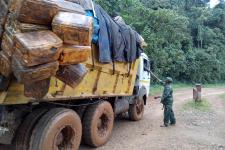How aid and trade finance conflict

Analysts tend to focus on the role of natural resources in financing conflict, but in a new article for Foreign Policy, DIIS researcher Peer Schouten argues that instead, it’s trade routes. Based on his forthcoming book Roadblock Politics, Schouten gives examples of how armed groups in conflicts around the world finance themselves simply by setting up shop along trade routes and forcing everyone who passes to pay. In Congo, Schouten has mapped over 800 roadblocks, operated by a mix of state agents and rebels. In Afghanistan, the US helped the Afghan army build 10.000 checkpoints to establish control over the vast country—checkpoints that the Taliban are now capturing one by one, to finance their aggressive expansion as the US retreats. In Syria, at the height of the conflict, Aleppo alone counted a whopping 1.000 roadblocks, while in Somalia, Al Shabab has a more sophisticated road tax system than the western-backed government does.
The problem is, according to Schouten, that western companies and aid organizations are not exempt. The international operations of firms and relief organizations have gotten so complex that head offices often have no clue on how their foot soldiers far away in war zones get the job done. This allows the workers of transport the leeway to pay rebels for passage, and HQ to claim they didn’t know. To stop trade and aid from financing conflict, Schouten argues, we need new rules for global supply chains. Until we do, trade routes will remain the sinews of conflict financing the world over.
DIIS Experts

